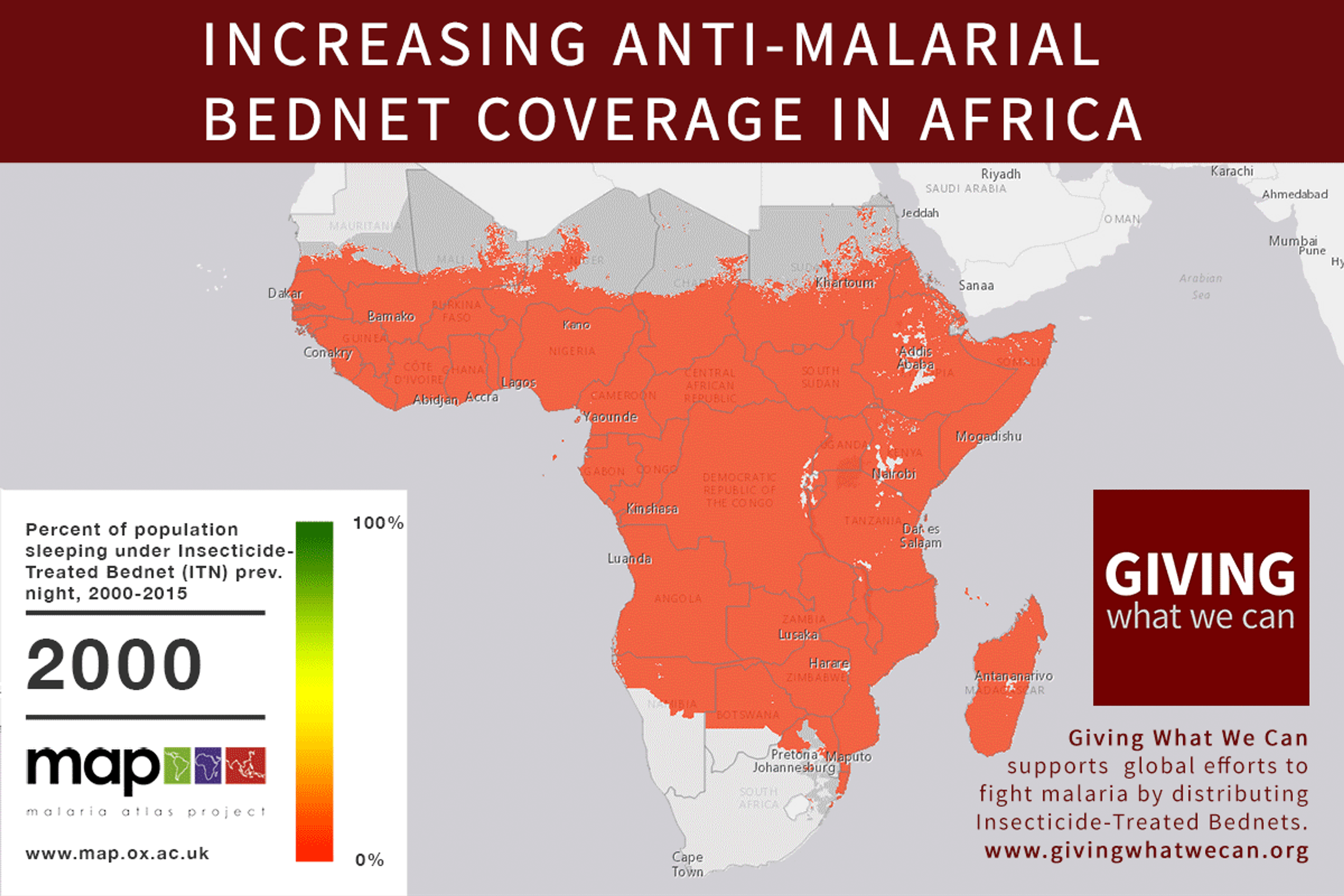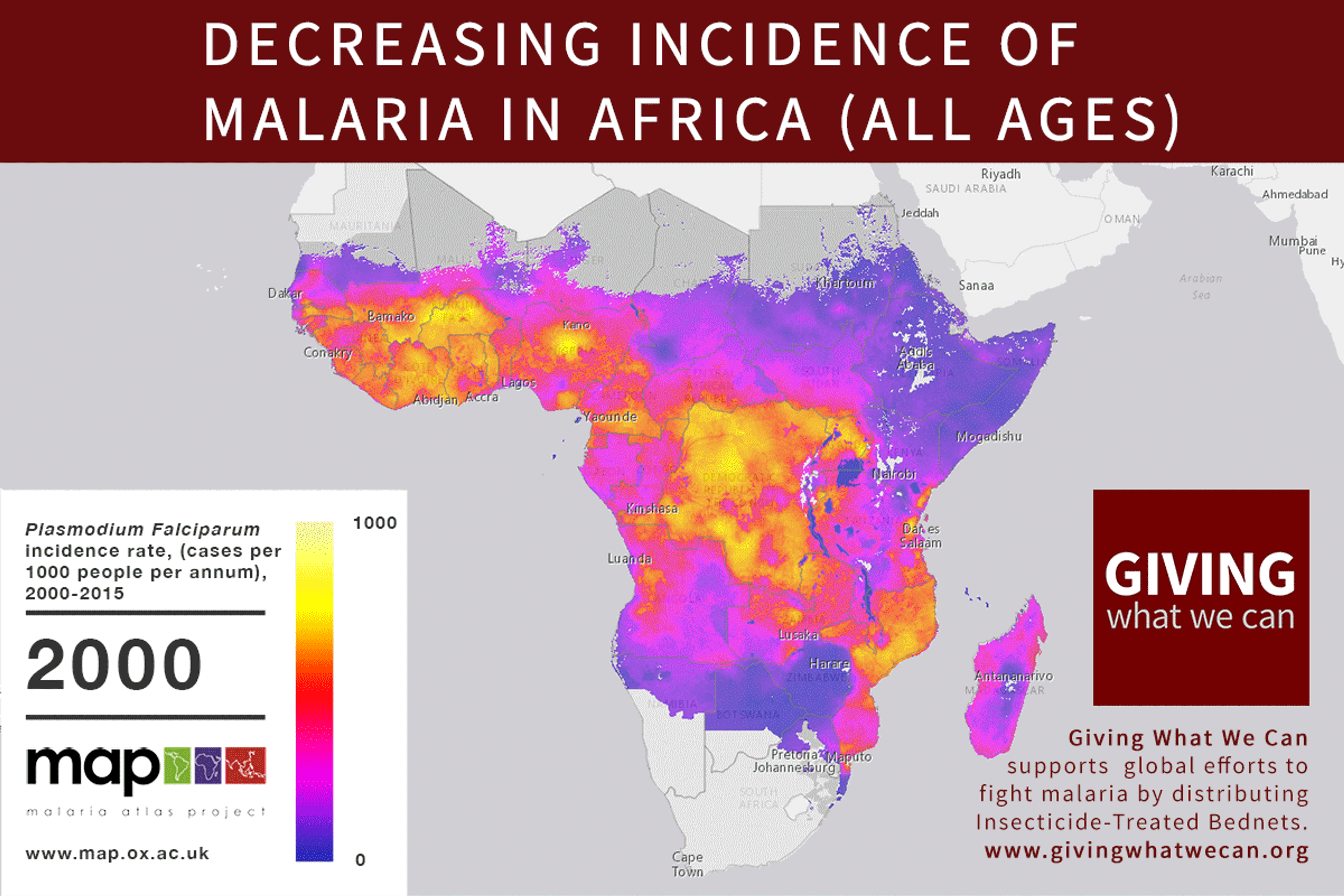Can foreign aid and international charity make a difference?
This article is part of a series addressing common concerns about charitable giving.
Can foreign aid and international charity make a difference?
The effects of foreign aid and international donations can often feel distant and unknowable. However, a lot has been achieved through international charity, including the eradication of diseases and the lifting of billions out of extreme poverty.
People are often skeptical of foreign aid and international giving, perhaps because they have been aware of problems like global poverty for a long time and haven't observed much improvement. However, the lack of progress may not indicate that foreign aid doesn't work, but rather that there isn't enough of it. Foreign aid receives far less government funding than people think, at least in the United States. The funding that aid does receive is not always directed to the most effective interventions.
While not every single aid program works as intended, the widespread skepticism of aid isn't warranted. The truth is: foreign aid not only works, but is behind some of humanity's greatest successes. Foreign aid benefits all of us, but especially those in greatest need.
What has foreign aid achieved?
Despite being underfunded, a lot has been achieved by aid across the world. For example:
- Smallpox was eradicated worldwide following a World Health Organisation (WHO) initiative launched in 1966. A highly contagious disease, it accounted for nearly 300 million deaths in the 20th century. The international effort, which supplied endemic countries with vaccines and testing kits, cost less than $300 million USD and eradicated smallpox from the entire world, with the last case being reported in 1977.
- Guinea worm disease, a debilitating parasitic disease, is likely to be eradicated in the next few years thanks primarily to the efforts of the Carter Center, the WHO, and UNICEF. Between 1986 and 2020, the number of cases per year fell from 3.5 million to just 27. It is expected to be the first parasitic disease to be eradicated.
- International support for immunization programs against polio, an infectious disease that causes paralysis in children under the age of five, has led to a drastic fall in cases. There were 350,000 cases in 1988 and less than 175 in 2019. The Global Polio Eradication Initiative coordinates work across the WHO, the Centers for Disease Control and Prevention, and UNICEF. It sources 57% of its funding from governments.
- Research suggests that, from 2000--2015, aid in the form of anti-malarial interventions have prevented about 663 million malarial fevers. There were 262 million cases of malaria in 2000, and 214 million in 2015. Long-lasting insecticide treated bed nets are particularly effective; they are responsible for about 68% of the malaria reduction, or about 450 million cases of malaria. The animated images below show the increase in bednets from 2000--2015, along with the associated decrease in malaria cases. Learn more on our Malaria page.


How much is spent on foreign aid and international charity?
The 2019 U.S. foreign aid budget was $39.2 billion and individual Americans donated $22.97 billion to international charities in 2018. In relative terms, these are tiny amounts. Compare them to the median annual revenue of a Fortune 500 company ($5.6 billion USD) and the 2019 GDP of the U.S. ($21.43 trillion). Even the U.S.'s miniscule spending on foreign aid has helped us make great strides. Just think what we could achieve if we gave more, especially if we gave to the most effective programs!
Instead of pressuring governments to cut foreign aid spending, we should pressure them to be more transparent about their activities and impact, and to direct funds to the most effective programs. Just as we seek to fix problems that arise in domestic agencies instead of simply cutting their funding, we should seek to improve foreign aid, not end it.
You can help alleviate suffering around the world by donating to our recommended charities. Consider making a giving pledge and joining our worldwide community of like-minded people who are working to make the world a better place.
This post is part of our Common Concerns About Donating to Charity page. Multiple authors contributed.